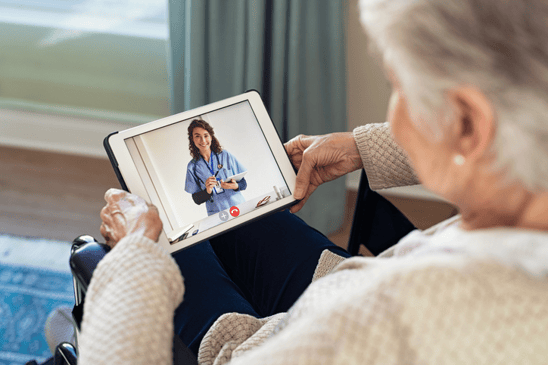Hybrid Healthcare & The Future of Telehealth

Though it was in use prior to the pandemic, telehealth use has exploded during the pandemic. And as the pandemic continues, so does the use of telehealth despite restrictions being changed. In fact, there were in March of 2021 than in March of 2020.
However, despite the widespread use of telehealth or hybrid healthcare -- where some visits are virtual while others are in-person -- there have been data that show providers and patients are getting what’s widely known in the business world as “Zoom fatigue.”
Another issue facing the sustainability of telehealth is the ability to properly protect patient data. A study found that most mobile apps didn’t have consistent privacy practices and some don’t even have privacy policies. In the summer of 2020, a data breach of a telehealth app in England resulted in users being able to see other patients’ appointments.
Despite these risks, the secure use of telehealth technology has the potential to make healthcare access more equitable regardless of a patient’s location or income.
Is Telehealth Just as Effective as In-Person Care?
Researchers examined primary care patients who received in-person care and those who received telehealth care and found that diagnostic accuracy was not significantly different. Accuracy of in-person appointments was 83%, while accuracy of telehealth appointments was 80%.
The most missed diagnoses in the study included pneumonia, cancer, renal failure and heart failure.
Many physicians expressed concern that building rapport with patients would be more difficult virtually than in-person.
In addition, there are equity concerns for patients who don’t have the equipment or internet connection necessary to facilitate virtual appointments. And while telehealth has proven useful for a variety of interactions, there are still those emergencies that can’t be evaluated or treated over a computer screen or telephone.
What the Future Looks Like
The future looks hybrid for many consumers, who perform most of life’s activities online. Need groceries? Order them online. Want to watch a new movie? Stream it online. Need to deposit money? Do it online. So, it only makes sense that a portion or all of a patient’s healthcare journey would occur online, too.
According to an Amwell survey, 59% of consumers had their first telehealth appointment during the pandemic, and 90% of patients and 80-84% of physicians reported being very pleased with how the interactions went.
In-person treatment like procedures, labs, imaging or vaccinations could be easily combined with online elements like remote monitoring or virtual physician check-ins.
The Amwell survey found that more than half of consumers intended to keep using telehealth services after pandemic restrictions were lifted and 92% of providers said they intend to keep using it.
Telehealth seems to be here to stay, and it has seen physicians broaden their use of technology to help get patients the treatment they need regardless of their ability to come into the office.



